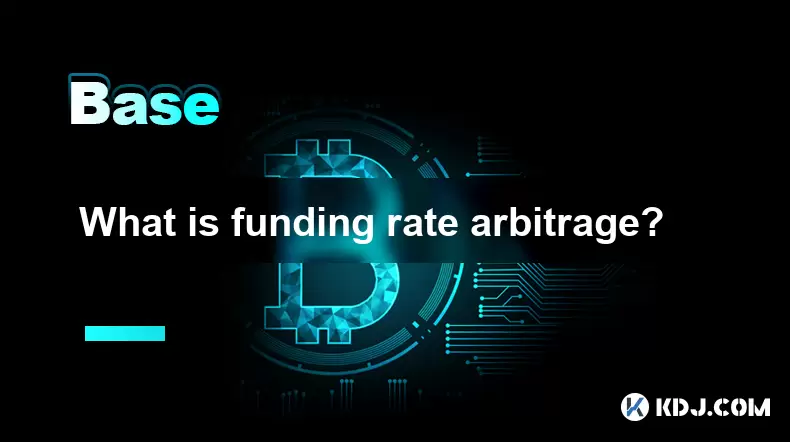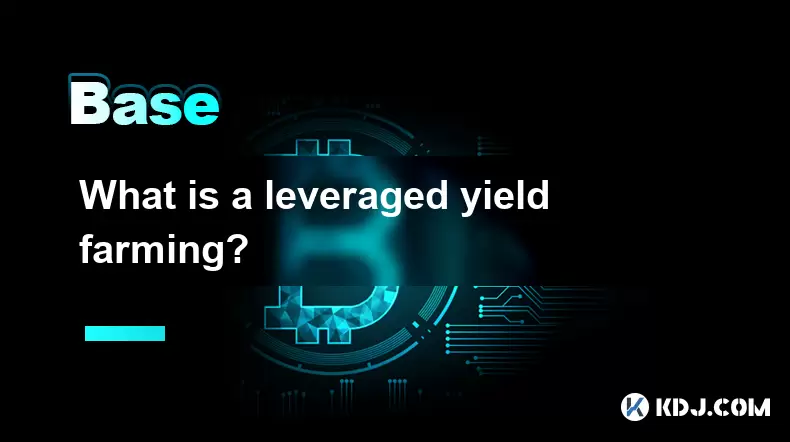-
 Bitcoin
Bitcoin $108,043.3894
-1.71% -
 Ethereum
Ethereum $2,519.1878
-3.09% -
 Tether USDt
Tether USDt $1.0004
-0.01% -
 XRP
XRP $2.2231
-2.72% -
 BNB
BNB $655.3607
-1.06% -
 Solana
Solana $148.3620
-2.84% -
 USDC
USDC $1.0000
0.00% -
 TRON
TRON $0.2838
-0.37% -
 Dogecoin
Dogecoin $0.1648
-4.79% -
 Cardano
Cardano $0.5759
-3.97% -
 Hyperliquid
Hyperliquid $38.4598
-5.19% -
 Sui
Sui $2.9005
-4.22% -
 Bitcoin Cash
Bitcoin Cash $481.1531
-3.80% -
 Chainlink
Chainlink $13.1936
-4.50% -
 UNUS SED LEO
UNUS SED LEO $9.0471
0.41% -
 Avalanche
Avalanche $17.9444
-4.20% -
 Stellar
Stellar $0.2378
-2.60% -
 Toncoin
Toncoin $2.7850
-3.38% -
 Shiba Inu
Shiba Inu $0.0...01148
-3.75% -
 Litecoin
Litecoin $87.3159
-3.73% -
 Hedera
Hedera $0.1557
-3.02% -
 Monero
Monero $314.0980
-1.98% -
 Polkadot
Polkadot $3.3909
-5.10% -
 Dai
Dai $1.0001
0.00% -
 Ethena USDe
Ethena USDe $1.0002
-0.02% -
 Bitget Token
Bitget Token $4.4147
-3.74% -
 Uniswap
Uniswap $6.9933
-9.59% -
 Pepe
Pepe $0.0...09661
-6.72% -
 Aave
Aave $264.1417
-6.16% -
 Pi
Pi $0.4705
-5.23%
What is funding rate arbitrage?
Funding rate arbitrage lets traders profit from funding rate differences across exchanges by taking opposing perpetual futures positions, offering low-risk returns when executed properly.
Jul 04, 2025 at 11:43 am

Understanding Funding Rate Arbitrage in the Cryptocurrency Market
Funding rate arbitrage is a trading strategy employed by crypto traders to exploit differences in funding rates across various perpetual futures exchanges. In perpetual contracts, funding rates are periodic payments made between long and short traders depending on whether the price of the asset is above or below the spot price. When these rates differ significantly across platforms, savvy traders can open opposing positions on different exchanges to capture risk-free profit.
This type of arbitrage doesn’t involve directional market risk, making it appealing to algorithmic and quantitative traders. The key lies in identifying disparities in funding rates at any given time and executing trades with precision to ensure that gains from one position offset losses (if any) on the other.
How Funding Rates Work in Perpetual Futures
Perpetual futures contracts do not have an expiration date, unlike traditional futures. To keep the price of these contracts aligned with the underlying asset’s spot price, exchanges use a mechanism called funding rate. This rate determines how much traders pay or receive every few hours—typically every 8 hours—based on their position.
If the perpetual contract trades above the spot price, longs pay shorts. Conversely, if it trades below, shorts pay longs. The funding rate is usually calculated using formulas that factor in interest rates and the premium of the perpetual contract over the spot index.
The magnitude and direction of these funding rates vary from exchange to exchange due to differences in liquidity, trader sentiment, and market depth. This variation creates opportunities for funding rate arbitrage.
Executing Funding Rate Arbitrage: Step-by-Step Approach
To execute this strategy successfully, traders need to:
- Monitor multiple exchanges simultaneously: Use tools or APIs that provide real-time data on funding rates.
- Identify favorable rate disparities: Look for exchanges where the funding rate is significantly higher on one side compared to another.
- Open opposing positions: For example, go long on an exchange offering high positive funding while going short on an exchange with low or negative funding.
- Ensure capital allocation efficiency: Balance margin requirements across both exchanges to avoid liquidation risks.
- Calculate net gain: Subtract transaction costs, fees, and slippage from the expected funding income differential.
Some traders automate this process using bots to react instantly when arbitrage windows open, as these opportunities can be fleeting.
Risks and Challenges Involved in Funding Rate Arbitrage
While funding rate arbitrage may seem like a risk-free opportunity, several factors can erode profits or even cause losses:
- Market volatility: Sudden price swings can trigger liquidations if margin levels are not properly managed.
- Exchange-specific risks: Delays in execution, withdrawal restrictions, or sudden changes in funding mechanisms can disrupt strategies.
- Transaction and trading fees: These reduce net returns, especially when small funding rate differences are involved.
- Slippage during entry/exit: Entering and exiting positions at unfavorable prices can eat into profits.
- Regulatory uncertainty: Some jurisdictions impose restrictions on derivative trading or fund transfers between platforms.
Traders must account for all these elements before committing capital to such strategies.
Tools and Platforms Supporting Funding Rate Arbitrage
Several tools help traders identify and act upon funding rate discrepancies:
- Arbitrage dashboards: Platforms like Fundingrate.com or Deribit Insights offer live comparisons of funding rates across major exchanges.
- TradingView alerts: Custom scripts can notify traders when certain thresholds are met.
- API integrations: Exchanges like Binance, Bybit, and OKX allow API access for automated trade execution.
- Margin calculators: These help assess required capital per position and potential liquidation points.
- Portfolio management tools: Services like CoinGecko Portfolio or Blockfolio help track performance across multiple accounts.
Using these tools enables traders to respond swiftly and efficiently to changing conditions.
Common Questions About Funding Rate Arbitrage
- Can retail traders engage in funding rate arbitrage? Yes, though success depends on access to real-time data, low-latency execution, and sufficient capital to manage margin requirements.
- Is funding rate arbitrage truly risk-free? No, despite its theoretical appeal, practical risks such as slippage, fees, and exchange-specific issues make it far from guaranteed.
- What is the typical holding period for such trades? Positions are generally held until the next funding interval—usually every 8 hours—but some traders extend them based on projected rate trends.
- Do all exchanges support perpetual futures? No, only select exchanges offer perpetual contracts; popular ones include Binance, Bybit, Bitmex, and Deribit.
Disclaimer:info@kdj.com
The information provided is not trading advice. kdj.com does not assume any responsibility for any investments made based on the information provided in this article. Cryptocurrencies are highly volatile and it is highly recommended that you invest with caution after thorough research!
If you believe that the content used on this website infringes your copyright, please contact us immediately (info@kdj.com) and we will delete it promptly.
- Bitcoin's Pattern Break: Are HODLers the Key to the Next Surge?
- 2025-07-04 18:50:12
- Bitcoin Price, Trump's Bill, and the $150K Dream: A NYC Take
- 2025-07-04 19:50:12
- Ethereum, LILPEPE, and the July Bounce: Will Pepe Steal ETH's Thunder?
- 2025-07-04 19:10:12
- Binance Institutional Loans: Unlocking 4x Leverage and Zero Interest for Whales
- 2025-07-04 19:15:12
- Bitcoin Bull Run: Analysts Eye Peak in Late 2025?
- 2025-07-04 19:20:13
- Pepe Indicators, Bullish Forecast: Can the Meme Coin Rally?
- 2025-07-04 19:25:12
Related knowledge

What is a user-generated content (UGC) NFT platform?
Jul 04,2025 at 01:49pm
Understanding the Concept of a UGC NFT PlatformA user-generated content (UGC) NFT platform is a digital marketplace or ecosystem where users can create, mint, and trade non-fungible tokens (NFTs) that represent ownership of original digital content they produce. Unlike traditional NFT platforms where creators often include professional artists or develo...

What is a token generation event (TGE)?
Jul 04,2025 at 07:14am
Understanding the Basics of a Token Generation Event (TGE)A Token Generation Event (TGE) refers to the process through which a blockchain project creates and distributes its native tokens to investors, participants, or stakeholders. This event is often associated with new cryptocurrency projects launching on platforms like Ethereum, Binance Smart Chain,...

What is a block explorer API?
Jul 04,2025 at 05:07am
Understanding the Role of a Block Explorer APIA block explorer API is a crucial interface that enables developers and users to interact programmatically with blockchain data. Unlike traditional APIs used in web services, a block explorer API specifically provides access to blockchain-related information such as transaction details, wallet balances, bloc...

What is a leveraged yield farming?
Jul 04,2025 at 09:36am
Understanding Leveraged Yield FarmingLeveraged yield farming is a more advanced form of yield farming, which itself is a popular method in the decentralized finance (DeFi) ecosystem to earn returns by providing liquidity to various protocols. In traditional yield farming, users deposit tokens into a DeFi platform and earn rewards in return, often in the...

What is open interest in derivatives?
Jul 03,2025 at 02:49pm
Understanding Open Interest in DerivativesOpen interest is a critical metric used in the cryptocurrency derivatives market, particularly when analyzing futures and options contracts. It represents the total number of outstanding contracts that have not been settled or closed by either party involved. Unlike trading volume, which counts all trades made i...

What is funding rate arbitrage?
Jul 04,2025 at 11:43am
Understanding Funding Rate Arbitrage in the Cryptocurrency MarketFunding rate arbitrage is a trading strategy employed by crypto traders to exploit differences in funding rates across various perpetual futures exchanges. In perpetual contracts, funding rates are periodic payments made between long and short traders depending on whether the price of the ...

What is a user-generated content (UGC) NFT platform?
Jul 04,2025 at 01:49pm
Understanding the Concept of a UGC NFT PlatformA user-generated content (UGC) NFT platform is a digital marketplace or ecosystem where users can create, mint, and trade non-fungible tokens (NFTs) that represent ownership of original digital content they produce. Unlike traditional NFT platforms where creators often include professional artists or develo...

What is a token generation event (TGE)?
Jul 04,2025 at 07:14am
Understanding the Basics of a Token Generation Event (TGE)A Token Generation Event (TGE) refers to the process through which a blockchain project creates and distributes its native tokens to investors, participants, or stakeholders. This event is often associated with new cryptocurrency projects launching on platforms like Ethereum, Binance Smart Chain,...

What is a block explorer API?
Jul 04,2025 at 05:07am
Understanding the Role of a Block Explorer APIA block explorer API is a crucial interface that enables developers and users to interact programmatically with blockchain data. Unlike traditional APIs used in web services, a block explorer API specifically provides access to blockchain-related information such as transaction details, wallet balances, bloc...

What is a leveraged yield farming?
Jul 04,2025 at 09:36am
Understanding Leveraged Yield FarmingLeveraged yield farming is a more advanced form of yield farming, which itself is a popular method in the decentralized finance (DeFi) ecosystem to earn returns by providing liquidity to various protocols. In traditional yield farming, users deposit tokens into a DeFi platform and earn rewards in return, often in the...

What is open interest in derivatives?
Jul 03,2025 at 02:49pm
Understanding Open Interest in DerivativesOpen interest is a critical metric used in the cryptocurrency derivatives market, particularly when analyzing futures and options contracts. It represents the total number of outstanding contracts that have not been settled or closed by either party involved. Unlike trading volume, which counts all trades made i...

What is funding rate arbitrage?
Jul 04,2025 at 11:43am
Understanding Funding Rate Arbitrage in the Cryptocurrency MarketFunding rate arbitrage is a trading strategy employed by crypto traders to exploit differences in funding rates across various perpetual futures exchanges. In perpetual contracts, funding rates are periodic payments made between long and short traders depending on whether the price of the ...
See all articles

























































































